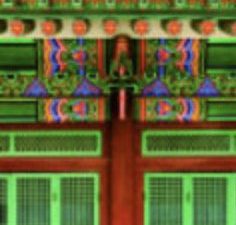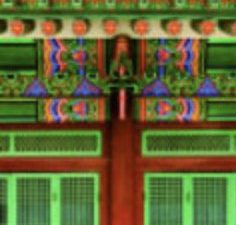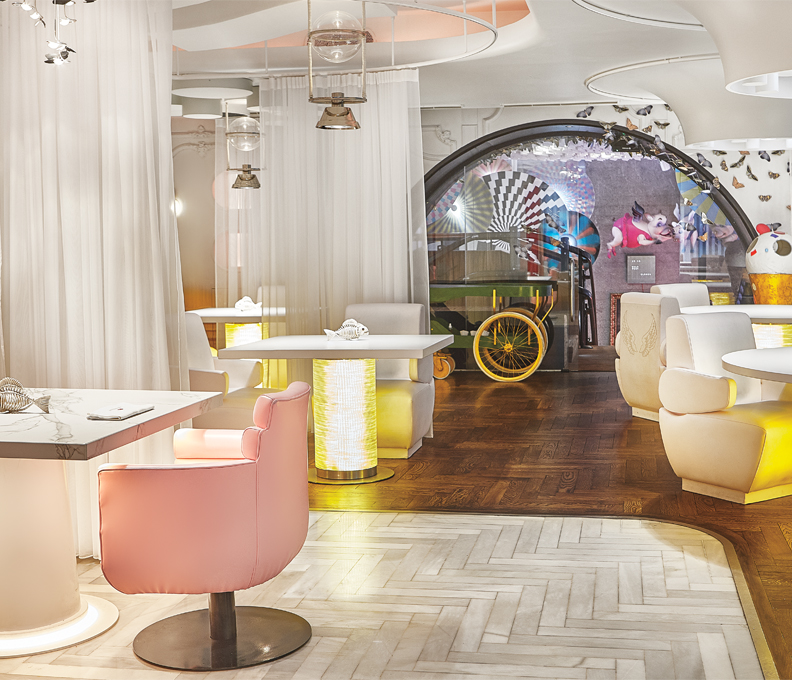Side by side
July 29, 2017

Seoul’s list of tourist activities and attractions is long and varied, representing a deep well of opportunity for those intent on exploring beyond the conference hall. With exhibition venues and MICE-focused hotels spread throughout the city, Seoul’s extensive subway network ensures attendees can easily traverse the sprawling metropolis to delve into its diverse offerings, from food, heritage and retail to pop culture or natural landscapes.
Divided by the Han River, Seoul has expanded from its old north-side cityscape to now include a modern area south of the river. Plenty of commercial, financial, retail and entertainment developments can now be found here, while the bulk of the city’s history and heritage is located to the north.
“Many of our competitors are located in Seoul’s southern area, but location-wise it’s not the same,” says Bruce Lee, general manager and president of the Grand Ambassador Seoul hotel in Jangchung-dong on the north side of the river. “We benefit a lot from our location, near to Namsan Park, Myeongdong, Dongdaemun and Itaewon. These are all areas many foreigners are keen to see.”
Whether you’re staying north or south of the Han, however, visiting its many attractions is becoming increasingly easy. For starters, Seoul’s main international airport at Incheon is undergoing a major expansion with the opening of its new Terminal 2 building at the end of this year, along with upgrades to its leisure options in the near future. These offerings include a new entertainment and retail “airport city” with integrated resorts and a second golf course all located nearby.
Meanwhile in July last year, the Seoul Tourism Organization (STO) together with the Seoul Metropolitan Government launched the Discover Seoul Pass, a 24-hour pass providing access to 16 of the city’s most popular sites. While many delegates may be the recipient of another of STO’s MICE initiatives – the Seoul MICE card, which functions as a partially pre-paid travel card for participants of qualifying events – the Discover Seoul Pass specifically offers a more leisure and downtime-focused function.
At a cost of ?39,900 ($36) and connected to a downloadable app with site information and a countdown timer, it acts both as a travel card and entry ticket for tourist sites. (A brand new 48-hour version was launched this spring, costing ?55,000 /$49 and giving access to more than 20 attractions, plus discounts and coupons for 13 shops and venues.)
“Both MICE and leisure tourists benefit from the Discover Seoul Pass and One More Trip, an online platform allowing locals to sell unique experiences and tours while offering participants a memorable and different experience,” says Park Jin-Hyeok, director of the Seoul Convention Bureau (SCB). “These include Korean brewery tours, traditional seal making and Korean barbecue tours, among others.”
Lost in Antiquity
The most notable attractions included in the pass are Seoul’s four major palaces, all located on the north side of the river. While Gyeongbokgung Palace – the largest – is perhaps the most popular, Changdeokgung and the directly connected Changgyeonggung Palace in Jongno district are also a joy to explore.
Built in 1405, Changdeokgung was named a UNESCO World Heritage site in 1997. The palace buildings vary significantly in scale and style, with ornately designed interiors and large courtyards connected by winding, tree-lined paths.
Beyond the palace buildings is the Huwon Secret Garden, which harbors bucolic ponds and streams (cdg.go.kr). Changgyeonggung is a smaller palace built in 1483 as a residence for wives and concubines. Here you can also wander freely through the smaller-scale buildings, courtyards and gardens with waterways and bridges (english.visitseoul.net).
To the southwest is another popular historic attraction: Dongdaemun Gate. One of the eight gates of the old Seoul City Wall (parts of which still remain and can be hiked along), Dongdaemun now sits somewhat incongruously in the midst of one of the city’s top shopping and entertainment districts. The revitalized Cheonggyecheon Stream that bisects the old city center passes close by; markets and 24-hour malls sell all manner of goods; and the Dongdaemun Design Plaza showcases exhibitions, forums and fashion shows.
Still on the north side of the river is one of Seoul’s most popular districts, Myeongdong. This lively area is also a shopper’s paradise, with vast duty-free stores (including the main branch Lotte Duty Free Shop connected to the Lotte Hotel Seoul in neighboring Euljiro district), and cosmetics and fashion shops.
Bon Appétit
If retail therapy isn’t your thing, though, Myeongdong has another of Seoul’s greatest offerings in spades – street food. Getting acquainted with the city’s culinary scene is easiest and most enjoyable here via the numerous street food stalls, with delicacies spanning the spectrum from twisty potato sticks and spicy tteokbokki rice cakes to more upmarket fare including grilled scallops and lobster with garlic butter. For those seeking a more sit-down affair, Myeongdong’s abundant Korean barbecue, noodle and Korean fried-chicken restaurants are definitely worth sampling.
Out towards the west of the city is Hongdae, another busy street-market district albeit with a slightly younger focus owing to its popularity among students from the nearby Hongik University. Street performances are common here, with plenty of entertainers busking to sizeable crowds.
Cafés, galleries, clubs and the artists’ Free Market (freemarket.or.kr) can be found here, with Hongdae Mural Street (also known as Picasso’s Street) a prime spot to see both graffiti and other artworks. Hongdae is also home to the Trickeye & Ice Museum, which provides trompe l’oeil artworks that visitors can step into and take 3D-effect pictures (trickeye.com).
Continuing south, Namsan Park in Yongsan district is home to both Namsan Mountain and the N Seoul Tower. A popular hiking area in the middle of the city, Namsan Park offers great views particularly from the tower at the summit. Reaching 1,575 feet above sea level at its tip, the 775-foot tower is joined by a courtyard featuring cultural performances and a number of F&B outlets (nseoultower.com).
A short distance to the west of Namsan Park is one of Seoul’s newest and most exciting developments, the Seoul Station 7017 Project, also known as “Seoullo 7017.” The core of the project is the rejuvenation of a once forgotten half-mile-long elevated road which opened in May, creating what has been described as Seoul’s answer to the High Line in New York City.
The 45-year-old road was shut down in 2006 due to concerns over its safety, leading the Seoul Metropolitan Government to convert it into a pedestrian-centric “hanging garden” walkway. The aim has been to connect the underdeveloped area around Seoul Station to the city center, turning it into an area dedicated to “urban tourism and conventions” with space for cultural programs (english.seoul.go.kr).
Heading South
While many of Seoul’s popular sites are concentrated north of the river, the city’s more modern south is far from devoid of offerings. For a start, there’s the Noryangjin Fisheries Wholesale Market in Dongjak district, just across from Yeouido (which is home to the International Finance Centre Seoul, the IFC Mall and Conrad Seoul hotel). First opened in 1927 on the north side of the river, Noryangjin market was relocated in 1971 and is now one of the largest seafood markets in the country. Things get going here very early, typically around 1 AM, and there are a number of intriguing sights, including a live fish auction at around 3 AM.
“For smaller groups, we’ve organized boat cruises on the Han, tours of the historical sites, but what’s really popular is the fish market,” says Mark Meaney, general manager of Conrad Seoul. “We bring people down to the fish market during the day, organize a tour and then guests can select their fish. They can have it cooked there, but we often bring it back to the hotel and have it as part of the meal.”
Also south of the river is the Figure Museum W in the increasingly popular Gangnam district. A haven for fans of science-fiction movies and comics, the museum features multiple floors filled with action figures from Marvel and DC comics, films, and Japanese and Korean manga comics. A particularly good stop for visitors traveling with children, the museum also includes a shop with experts offering advice for enthusiasts and seasoned collectors (figuremuseumw.co.kr).
Gangnam district is also home to the SMTown at the Coex Artium, part of the Coex Center, which includes a convention and exhibition center as well as a shopping mall. Here visitors can take a tour of studios, training rooms, and video and photo sets used by South Korea’s K-pop stars. Classes led by professional choreographers and voice coaches are also a big hit with MICE groups, with experiences such as dressing up in K-pop outfits at Klive – in Euljiro north of the river – regularly incorporated into pre- or post-event itineraries (smtownland.com; klive.co.kr).
Finally, to the east of the Coex Center is the Lotte World Tower, one of the most recent developments in Seoul, which opened at the beginning of April. Standing at 1,825 feet and covering 123 floors (it’s the sixth tallest tower in the world), its skywalk and observation deck offer some of the most expansive and thrilling views available anywhere in the city.
For those looking for an even more extravagant way to experience Seoul from a high altitude, the tower’s ultra-luxury, 235-room Signiel Seoul hotel has fine dining and event spaces on the 76th, 79th and 81st floors. With European restaurant Stay by Yannick Alleno and the Michelin-starred Bicena Korean fine-dining restaurant both offering top-quality cuisine 1,100 feet above the ground, Signiel Seoul is a must for travelers looking to enjoy great food accompanied by fantastic views.
By Craig Bright




